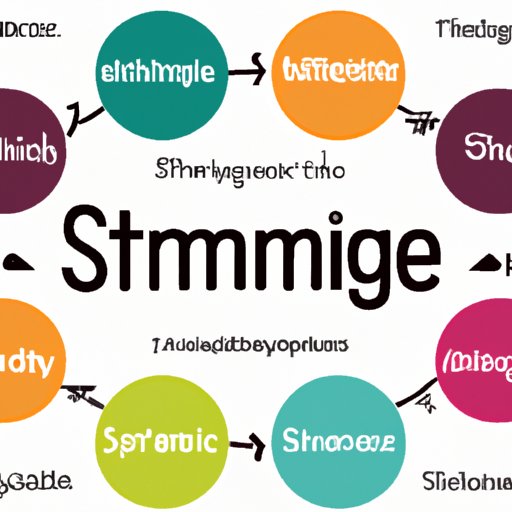Introduction
Synthesizing is an important skill for any writer to master. But what does it mean to synthesize in writing? To synthesize is to take multiple ideas or pieces of information and combine them into one cohesive argument. In this article, we’ll explore the definition of synthesizing, discuss various aspects of synthesis in writing, and provide tips and strategies for success.

Comprehensive Guide to Understanding Synthesize in Writing
Before diving into how to use synthesizing techniques in your writing, let’s first define what synthesizing means. Synthesizing is the process of taking multiple ideas or pieces of information and combining them into one cohesive argument. It involves analyzing source material, identifying key points, developing a thesis statement, and connecting ideas into one unified argument.
How is synthesizing different from summarizing? While both involve taking multiple sources of information and condensing it into one document, there are some key differences. Summarizing is simply the act of reducing a text down to its main points, while synthesizing involves not only summarizing but also combining and connecting the ideas into one unified argument.

How to Use Synthesizing Techniques in Your Writing
Now that you have a better understanding of what synthesizing in writing is, let’s explore how to use these techniques in your own writing. The first step is to analyze source material and identify key points. Take notes on each source and highlight any important information or arguments. Once you have identified the key points, you can begin to develop a thesis statement that captures the essence of your argument.
The next step is to combine and connect the ideas from each source into one cohesive argument. Think about how the various points relate to each other and create a unified narrative. Make sure to include evidence from each source to back up your claims. Once you have connected all of the ideas, you should have a strong and unified argument.
Exploring the Power of Synthesizing in Creative Writing
In addition to being a useful tool for academic writing, synthesizing can also be used in creative writing. It can be used to explore multiple perspectives and create unique stories. By examining the connections between various sources, writers can craft effective metaphors and similes that add depth to their work.
Synthesizing can also be used to examine complex topics from different angles. By seeing the same topic from multiple perspectives, writers can gain a more comprehensive understanding of the subject. This can help them to craft compelling and nuanced stories that explore difficult themes.

Synthesizing Ideas: Tips and Strategies for Success
Now that you have a better understanding of what synthesizing in writing is and how to use it in your own work, let’s look at some tips and strategies for success. First and foremost, it’s important to learn how to effectively organize your thoughts. Take notes and outline your ideas before you start writing. This will help you to stay focused and ensure that your arguments flow logically.
It’s also important to vary your sentence structure and use active language. Avoid long, drawn-out sentences and focus on creating short, punchy sentences that keep your readers engaged. Finally, make sure to establish a clear purpose for your writing. This will help you to stay focused and ensure that your arguments are unified and effective.
Synthesizing Ideas: A Step-by-Step Guide for Writers
Now that you understand the basics of synthesizing in writing, let’s look at a step-by-step guide to help you get started. First, establish a clear purpose for your writing. This will serve as the foundation for your argument and help you stay focused. Next, identify the main points from each source material. Take notes and highlight any important information or arguments.
Next, examine the connections between various sources. Look for common themes, patterns, or arguments that can be used to support your thesis statement. Finally, build a strong and unified argument by combining and connecting the ideas from each source into one cohesive argument. Make sure to include evidence from each source to back up your claims.
Conclusion
In conclusion, synthesizing is an important skill for any writer to master. It involves analyzing source material, identifying key points, developing a thesis statement, and combining and connecting ideas into one cohesive argument. We explored the definition of synthesizing, discussed various aspects of synthesis in writing, and provided tips and strategies for success. With these tools in hand, you’re now ready to start synthesizing ideas in your own writing.
(Note: Is this article not meeting your expectations? Do you have knowledge or insights to share? Unlock new opportunities and expand your reach by joining our authors team. Click Registration to join us and share your expertise with our readers.)
